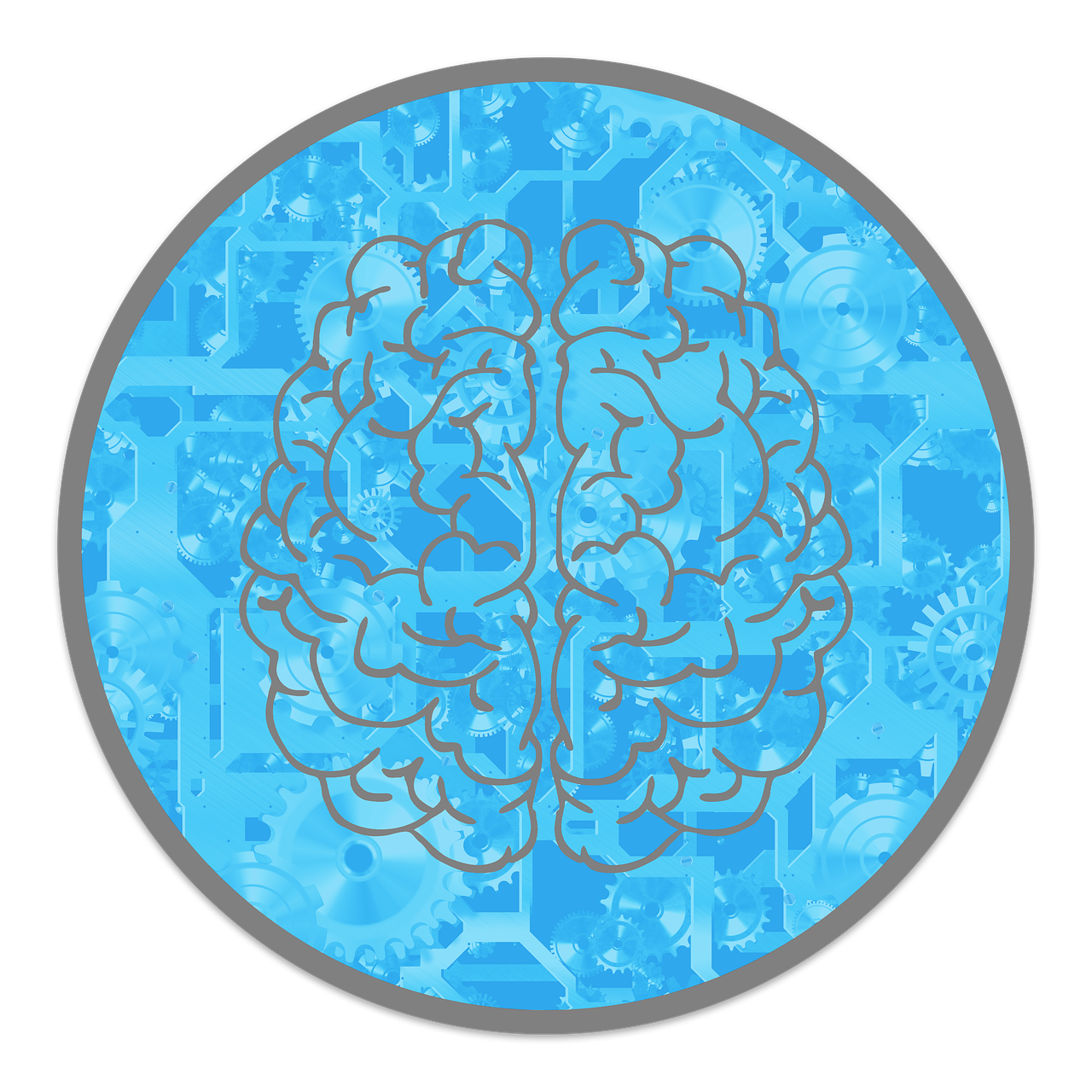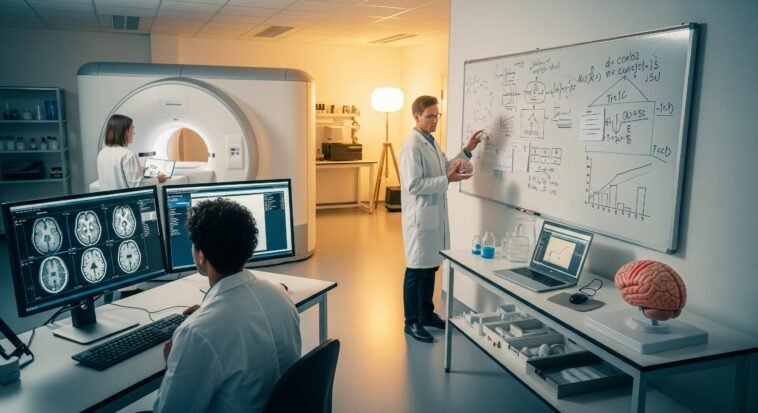
The human brain is wild—billions of neurons running the show, and we still don’t fully get how.
But thanks to better tech and smarter teamwork across fields, brain science is leveling up fast.
Today’s researchers aren’t just watching the brain; they’re actually tweaking it—think brain maps, AI, and tools that read your mind (almost).
This article dives into the coolest new brain research trends, how they work, and why they might change everything from how we heal to how we learn.
Welcome to the age of brain hacks.
The Evolving Landscape of Neuroimaging
If brain science had a superhero power, it’d be seeing inside the brain while it’s thinking.
That’s exactly what neuroimaging is about. And lately, the tools scientists use to peek inside your head are getting crazy good—like, CSI-for-the-brain level good.
Let’s break it down.
fMRI 2.0: Zooming in on brain action
fMRI’s been the go-to tool for decades.
It tracks blood flow to figure out which brain areas are “lit up” during stuff like reading, math, or feeling awkward in social situations.
But newer, high-powered fMRI machines (think MRI on steroids) give sharper images, faster.
That means scientists can now spot what parts of your brain are working and exactly when—kind of like going from pixelated YouTube to crisp Netflix HD.
DTI and connectomics: Mapping brain roads
Your brain’s not just one part doing one thing—it’s a network.
DTI (Diffusion Tensor Imaging) lets scientists trace the white matter “roads” that connect different areas. Imagine GPS for your thoughts.
Researchers use this to figure out how different brain parts talk to each other—and what happens when that goes wrong, like in autism or depression.
Connectomics is the next-level goal: a full brain wiring diagram. Yeah, like Google Maps, but for your neurons.
EEG + MEG: Listening to brain sparks
EEG listens to your brain’s electrical chatter.
MEG tracks its magnetic vibes.
Both are fast—like, millisecond fast. But they’re not great at telling where stuff is happening.
So now, researchers are combining them with fMRI to get both the where and the when.
Cool example? MEG helped scientists figure out why some Parkinson’s meds work for some people but flop for others—by reading brain signals before they even took the pills.

Artificial Intelligence and Machine Learning: Decoding the Brain’s Language
Neuroscience spits out a ton of data. Like, “you’ll need a supercomputer and a gallon of coffee” kind of data.
Enter AI and machine learning—tools that don’t just help with the mess, but actually make sense of it.
We’re talking decoding brain signals, predicting behaviors, and even spotting mental health issues before they show up.
Let’s break down how AI is changing the brain game.
Predicting brain behavior
Researchers use machine learning models (basically smart computer programs) to simulate how your brain might act in different situations.
Deep learning—think of it as AI on energy drinks—can now recognize patterns in brain activity tied to stuff like recognizing faces, reading words, or solving puzzles.
It’s like teaching your laptop to “read minds,” but more science, less Hogwarts.
Brain-computer interfaces
BCIs sound like sci-fi, but they’re very real.
With help from AI, scientists are building devices that connect directly to your brain.
These tools pick up your thoughts (ok, electrical signals, but still) and turn them into commands.
So if someone can’t move their arms, a brain-controlled robotic arm can do it for them—just by thinking about it.
Yeah, we’re basically turning thoughts into action, no wand needed.
AI in diagnosis
AI’s really good at finding stuff humans miss.
Like tiny red flags in brain scans that point to Alzheimer’s, way before symptoms show up.
For example, midlife MRI scans—usually pretty boring—can now be scanned by AI to catch signs of rapid brain aging.
It’s also helping doctors match mental health treatments to people’s actual brain profiles.
One system might say, “Hey, this person’s anxiety isn’t just emotional—it’s showing up in their prefrontal cortex. Let’s adjust treatment.”
Neurostimulation: Modulating Brain Activity for Therapeutic Gains
Neuroscience isn’t just about watching the brain anymore—it’s getting hands-on.
With tools like TMS and tDCS, scientists can now nudge brain activity in specific ways.
Think of it like tuning a radio: you adjust the signal to make it clearer.
Only here, the station is your brain, and the goal is better mental health or sharper thinking.
TMS: Magnetic brain taps
Transcranial Magnetic Stimulation (TMS) sounds intense, but it’s painless.
It uses magnetic pulses to trigger tiny electric signals in your brain.
Depending on where it’s aimed, it can either turn neurons up (like cranking volume) or down (like hitting mute).
Researchers use TMS to test what different brain regions actually do.
For example, zap the motor cortex and watch a finger twitch.
More importantly, doctors are using it to treat depression—especially when meds don’t work.
tDCS: Low-voltage brain boost
Transcranial Direct Current Stimulation (tDCS) is the simpler cousin of TMS. Instead of magnets, it uses a weak electrical current through electrodes on your head.
No pain, just a small buzz—like your brain’s sipping a low-voltage energy drink.
Studies show tDCS can boost focus, improve learning speed, and even help with depression or anxiety.
One experiment found people got faster at tough visual tasks just by using tDCS during practice. It’s like giving your brain a cheat code (but legal).

Breaking Down Silos for Holistic Understanding
The brain doesn’t do one thing at a time—it smells, thinks, feels, remembers, and reacts all at once. So studying just one piece (like neurons firing) won’t cut it.
You need someone who understands emotions, someone who knows how the nose works, someone who can model brain signals on a computer—and someone who asks big-picture questions like, “What does consciousness even mean?”
That’s how we get cool research like this:
Smells and emotions
Scientists studying how scent affects your mood have to connect the dots between your nose (biology), memory (psychology), brain structures like the amygdala (neuroscience), and how your brain processes meaning (maybe even philosophy).
It’s not just sniffing roses—it’s serious brain decoding.
Smart decisions
Ever wonder why smarter people usually make better life choices? That kind of question pulls in cognitive psychology (how we think), neuroscience (how the brain evaluates risk), and behavioral economics (why humans don’t always act logically).
Translational Research and Applications
Cognitive neuroscience isn’t just about learning cool stuff—it’s about using that knowledge to actually help people.
This is what we call translational research.
Basically, it means taking brain discoveries from the lab and turning them into treatments, apps, tools, or strategies that improve real lives. Here’s how brain science is moving from theory to practice:
New treatments for brain disorders:
- Alzheimer’s disease: One study even found a “sugar switch” that might protect the brain by controlling how neurons use glucose.
- Parkinson’s disease: Some new meds are helping brain cells grow back their little “antennae” (called cilia), which help them sense signals.
- Glioblastoma: FThis brain cancer is tough, but scientists are now testing ultrasound devices that open up the blood-brain barrier.
- Depression and anxiety: Turns out your brain’s immune system, yep, astrocytes, might play a role in depression.
- Neurodevelopmental disorders: RNA molecules (think of them as mini gene switches) are showing up in research on autism and epilepsy.
- Long COVID: The virus may be long gone, but some people are still feeling foggy, anxious, or off their game.
Cognitive training and rehabilitation
Scientists are now designing smarter cognitive training programs.
These aren’t your average brain games—they’re tailored to people’s actual brain patterns.
They can help boost memory, sharpen attention, or support recovery after a stroke or brain injury.
Enhancing human performance
Want to make better decisions? Learn faster? Focus longer? Neuroscience is digging into how your brain does all that—so we can teach you to do it better.
This research is helping educators, athletes, even CEOs upgrade their mental game using brain-based strategies.
Neuroethics
Brain tech is getting powerful—maybe too powerful.
With stuff like brain-computer interfaces (BCIs), neuro-enhancement, and AI-driven therapy tools, we’ve got some big ethical questions to face:
- Who owns your brain data?
- Can someone misuse neurotech to manipulate behavior?
- Should we be upgrading brains at all?
That’s why neuroethics is now part of the conversation. We need rules and boundaries before tech runs ahead of what’s actually safe, fair, or even human.

Challenges and future directions
Brain science has come a long way, but let’s not kid ourselves—the human brain is still a beast to figure out. It’s messy, weird, and totally unique in every person.
That makes building reliable theories (the kind that actually hold up) really hard.
Scientists are now pushing for more solid research habits—like sharing their methods, pre-registering studies, and not fudging the stats.
Basically, brain science is hitting the gym to get stronger.
Here’s where things are headed next:
- Integrated multimodal approaches: Researchers are done looking at brain scans in isolation. Now they’re blending brain imaging, genetics, and behavior data to get a full picture.
- Personalized neuroscience: With help from AI and genetics, researchers are developing diagnostics and treatments based on individual brain wiring.
- Deeper understanding of consciousness: This could help explain how we learn, remember, or even become self-aware.
- Advanced brain organoids: These brain organoids don’t think or dream, but they mimic how real brains develop and get sick.
- Bridging the gap between micro and macro scales: Scientists are working on bridging that gap—from micro (single neurons) to macro (networks and behavior).
Conclusion: The Endless Frontier of the Brain
Cognitive neuroscience isn’t just about science—it’s about figuring out who we are.
With tools like AI and high-res brain scans, researchers are finally making sense of how the brain works, how diseases mess with it, and how we might boost it.
As long as scientists stay sharp—sharing data, teaming up across fields, and asking the right questions—we’ll keep making progress.
The brain is still a mystery, but we’re cracking it open one discovery at a time. And honestly? We’ve only seen the trailer. The real movie’s just getting started.



